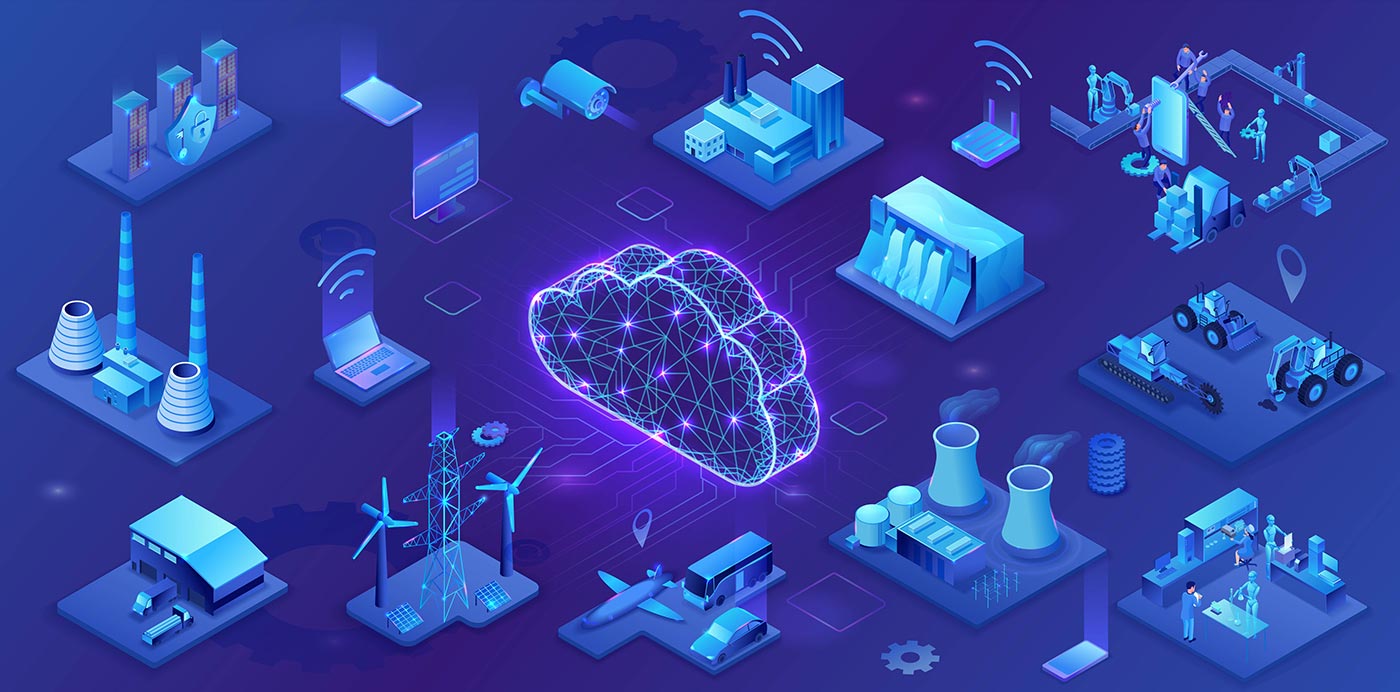The pursuit of competitive advantage has always driven organizations to embrace new technologies and processes to reduce costs and improve efficiency. In the last several years, IoT has been commonly cited as the “next big thing” that will disrupt a range of industries like manufacturing, transportation, and logistics.
What many operators may not realize is that adoption of large volumes IoT devices will occur in virtually every industry, not just a few. Simply put, the scope of change this adoption will demand in the IT and OT ecosystem is enormous. Starting with this article, I’ll be sharing information about this trend and how you, as an OT or IT professional, can help your organization navigate the IoT revolution.
Billions of IoT Devices = Massive Disruption to OT Network Monitoring and Control
Microsoft published a report last year forecasting that 94% of businesses will be using IoT by the end of 2021.1 When surveying over 3,000 IT decision-makers and developers, it found that the two most common reasons behind the adoption of IoT were:
- Operations optimization
- Employee productivity
And, once organizations had adopted IoT, the three most common benefits were:
- Increased efficiency
- Yield
- Quality
In spite of the benefits, adoption of IoT is likely going to be highly disruptive for many OT environments. They lack the ability to manage the number of devices deployed and the volume of data generated by those devices. Today, many mixed OT/IoT environments are unable to identify and monitor all the devices attached to their networks. That challenge will get significantly worse as IoT deployment becomes more widespread.
Last year, Gartner published its Market Guide for Operational Technology Security.2 Included in the report was a survey showing that a “staggering 93% of respondents stated that the adoption of the Internet of Things (IoT) is likely to augment or replace at least some of their heritage OT monitoring and control systems in their organizations during the next 12 months.

Unlimited IoT Use Cases in OT Environments
The use of IoT technology in OT environments is potentially unlimited. I believe it will supplement existing technology by offering reduced cost, increased volume and accuracy of data, as well as ease of deployment and remote monitoring.
Today, IoT devices are generating large volumes of data that can be used to monitor performance and pro-actively manage operations. Let’s look at some examples of the use cases internet-enabled technology can deliver to industry:
Agriculture – Measure air temperature, humidity in the air and ground, precipitation, and amount of sunshine in crop fields
Airports – Monitor aspects that affect passenger activity, including real-time traffic and parking capacity, security queue management, and baggage handling (as well as other operations-related functions such as fleet management, power grid management and building management)
Building Automation/Building Management – Optimize energy consumption and improve effectiveness of maintenance operations
Energy – Monitor every stage in the transmission and consumption of the electricity, including substations, wires, transformers and individual meters
Manufacturing – Monitor raw material supply chains and measure equipment performance in production processes to predict or detect unplanned interruptions
Maritime/Ports – Update shipping and trucking companies, port authorities, ships, and trucks on location of vehicles and goods, status of cargo, local terminal parking and traffic congestion
Mining – Improve the accuracy of ore data during drilling to increase production efficiency; Automate fleet operations such as the use of driverless trucks to haul ore to processing facilities
Oil & Gas – Reduce unplanned disruptions by improving monitoring of pumps and pipelines; Increase the reliability of pipelines via sensors that monitor pressure, flow rate, and wall thickness
Pharmaceutical – Monitor temperature, light, pressure and humidity in production and storage environments of raw and finished materials
Transportation/Fleet Management – Measure fuel efficiency and engine performance, monitor driver behavior, and diagnose maintenance issues
The Implications of Massive IoT to IT/OT Processes Are Huge
Although forecasts of the number of IoT devices being deployed in the next few years vary widely, all forecasters agree on one thing – the number will end in “billions.”
This huge increase in assets deployed in OT environments has significant implications for operations and security teams – they will need to adapt many of their current device management and security workflows to incorporate IoT technology.3 These include:
- Provisioning: In addition to traditional provisioning requirements, IoT devices should also include secure authentication to gain access to the network. The particular authentication methods (such as SSO or 2FA) will depend on the devices and protocols used, but a common IoT best practice for OT environments will include enforcing device security at the individual sensor level during initial deployment.
- Configuration: The configuration management function is about to get more complex. Organizations need to ensure they can continuously and automatically update their Configuration Management Database (CMDB) with data on potentially thousands of devices in a single location.
- Monitoring: Similar to configuration management, device monitoring will become much more complex. Operators will need to be able to monitor potentially hundreds of thousands of devices deployed globally for operational anomalies caused by maintenance issues as well as cyber threats.
- Maintenance: IoT devices create a challenge for deploying patches and firmware updates without disrupting operations. Organizations will likely have to re-imagine their patch deployment workflows due to the sheer volume of IoT devices in their networks.
Are You Ready For the Coming IoT Device Boom?
If you haven’t already planned for widespread IoT deployment in your environment, it’s a good time to get going. One place to start is the Microsoft IoT Signals report, where you’ll find an overview of the benefits and challenges of IoT adoption, as well as security considerations. Then, depending on which industry you’re in, you should be able to find case studies and deployment guidelines on many of our global strategic alliance partners’ sites. Also, look at the links in the “Related Links” section below.
Don’t forget to ask your security vendors how their products will provide protection and scale to support your IoT roll-out.
For example, Nozomi Networks delivers unmatched visibility across all devices in an OT/IoT network. We offer on-premises, cloud, and now SaaS options to deliver the security and visibility you need to protect your network today, and expand your IoT deployments in the future.
If you’d like to discuss how we can help you get ready for the coming IoT boom, let us know.
References:
- Market Guide for Operational Technology Security, Gartner, November 2019
- Fundamentals of IoT Device Management, IoT Design











